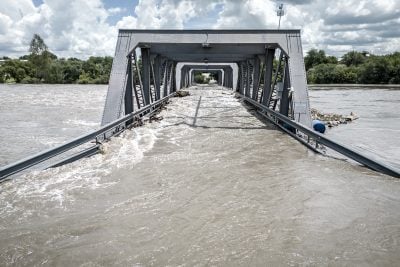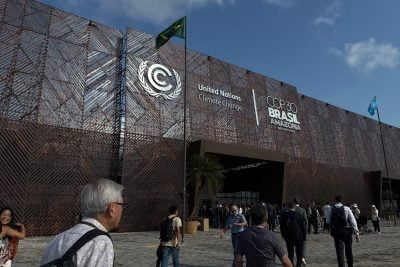Accounting for around 34% of the continent’s CO2 emissions in 2020, mostly generated by coal, it was somewhat of a surprise when South Africa emerged at the centre of a good news story at the last annual climate change conference – Cop26 – held in Glasgow at the end of 2021.
The good news was in the form of the “Just Energy Transition Partnership” (JETP) – a new deal between South Africa and G7 countries the US, UK, France, Germany and the EU, to support South Africa’s green energy transition from coal-fired energy production, by mobilising $8.5bn, including from private sector sources.
According to a recent World Economic Forum paper, South Africa will require $250bn to 2050 to finance its energy transition, including $125bn to replace coal energy with wind and solar, with the rest needed for storage, transmission and support for impacted communities.
Given the positive reception to the JETP, the G7 have also said they would like to develop more JETPs with the global south, which will then help deliver on the G7’s Partnership for Global Infrastructure and Investment (PGII), which is also aimed at mobilising $600bn from the public and private sectors to low and middle-income countries around the world up to 2027.
Proposals for new JETPs will almost certainly be made at the next climate conference, Cop27, in November 2022.
This all sounds encouraging in principle, but is it really? How should African countries respond? To answer this question, two issues are worth analysing:
First, whether other African countries also need some sort of “transition” support.
Second, whether the set-up itself – one recipient country and a group of donor or creditor countries – is appropriate for African countries to get the best out of global partnerships.
Do African countries need transition support?
Spoiler alert – Egypt does, but few others do.
Egypt, host of Cop27 in Sharm El-Sheikh – is the second biggest polluter on the continent behind South Africa, responsible for 16% of CO2 emissions in 2020.
Both Egypt and South Africa also have high levels of industrialisation and energy access – for instance, according to UNIDO’s Competitive Industrial Performance Index (CIP), which considers aspects such as manufactured exports per capita and manufactured exports share in total exports, South Africa is ranked highest on the continent, and Egypt third – just behind Morocco.
In 2020, Egypt was among the few African countries with 100% electricity access, while 84.4% of South Africans had access to electricity – the 11th highest across the continent. South Africa and Egypt also have similar percentages of renewable energy in their electricity mix.
In 2021, only 8.34% of South Africa’s electricity was from renewables, mainly wind, hydro and solar energy. Similarly, renewables in Egypt accounted for 10% of electricity generation.
And perhaps most importantly for the G7’s concept of the JETP mobilising investment from the private sector, a large share of the paltry (yet record high) 5% of global FDI flows that went to the African continent in 2021 was for South Africa and Egypt. In 2021, 17% of all greenfield investment in Africa went to South Africa (around $6bn), followed by Egypt at 14%.
The two destinations are no doubt the easiest countries to encourage the private sector to do more in, especially if it comes to investments perceived as risky – such as renewables.
Few other African countries come close to matching these criteria. In other words, other African countries are not making a “transition” as such.
The vast majority of African countries have not yet reached the levels of industrialisation, access to energy or foreign investment of South Africa and Egypt, and are therefore significantly further from meeting the Sustainable Development Goals (SDGs) and the African Union’s Agenda 2063 compared to South Africa and Egypt.
To ram home the point, in 2018, the energy sector was the top source of emissions for just 14 of Africa’s countries. The rest of the continent had agriculture and land-use change/forestry as their largest source.
While some of this is due to high renewable energy use – Kenya and Ethiopia for instance have hydro and geothermal – the fact is in 2020 renewables contributed about 9% to the total energy mix of Africa, and Africa’s renewable energy capacity accounts for just 2% of total global capacity.
Not even taking account of energy for industrial uses, only 39% of the continent’s population has access to electricity. This indicates just how far most African countries are from reaching their development and manufacturing potential. Indeed, most African countries don’t need to make a transition, they need to scale up.
This means the structure of the JETP would need significant adaptation for other African countries to make a real difference – to make them more “Just Energy Scale-Up Partnerships” and, as others have argued, also incorporate the use of a wide range of “cleaner” energy sources, including gas.
Furthermore, given the low private sector interest in most other African countries, plans beyond South Africa and Egypt would likely need to include a larger component of public financing.
What kind of support is appropriate for Africa?
But here is the most fundamental question – is it appropriate for Africa to focus on JETP-like structures? Is it in the fundamental interest of African governments to sit with a group of donor or creditor governments and even their private sectors – to get the best out of global climate-related partnerships? Is this how donor or creditor countries should best engage with African nations?
Our view is – not necessarily. The fact is, there are alternative set-ups possible, and these can deliver similar or better results for African countries, in line with Africa’s Agenda 2063 ambitions.
Take regional projects – from new builds to regional power pools and greater storage facilities that can allow for export and import of renewable energy within African sub-regions.
The Programme for Infrastructure Development in Africa (PIDA) already exists as a joint initiative of the African Union Commission, the African Development Bank (AfDB) and the New Partnership for Africa’s Development Planning and Coordination Agency and has a clear list of necessary, bankable infrastructure projects for energy access, transport and ICT.
To progress on these projects, it is necessary to bring together the key African countries, along with one or more donors or creditors.
The issue is that JETP-like structures could hold back progress on regional projects, by using African governments’ time and energy to negotiate smaller country-by-country projects and the conditions for the private sector to feel more comfortable investing.
Moreover, the JETP structures introduce the potential challenge of new deals being agreed just for energy to be exported out of the continent.
Over the first five months of the war in Ukraine, South Africa’s main export terminal, Richards Bay Coal Terminal, reportedly exported approximately 40% more coal to European countries that it did in all of 2021. Germany is looking to export LNG from Senegal to help with affected supplies from Russia. Angola and Congo export gas to Italy, while Egypt exports gas to the EU – and may export more in future as part of a “clean energy” transition plan.
That’s why at COP27, while JETPs can and should be on the agenda, African countries should look for more. Having the G7 or others agreeing to finance a number of crucial, regional renewable energy projects is a great additional outcome that should be on the table, so Africans can meet ambitious, scaled-up Africa-wide targets for both the environment and development.
Hannah Ryder is CEO of Development Reimagined, an African-led international consultancy based in China.
This article was co-authored by Lauren Ashmore, a policy analyst at Development Reimagined.
Want to continue reading? Subscribe today.
You've read all your free articles for this month! Subscribe now to enjoy full access to our content.
Digital Monthly
£8.00 / month
Receive full unlimited access to our articles, opinions, podcasts and more.
Digital Yearly
£70.00 / year
Our best value offer - save £26 and gain access to all of our digital content for an entire year!
 Sign in with Google
Sign in with Google 



